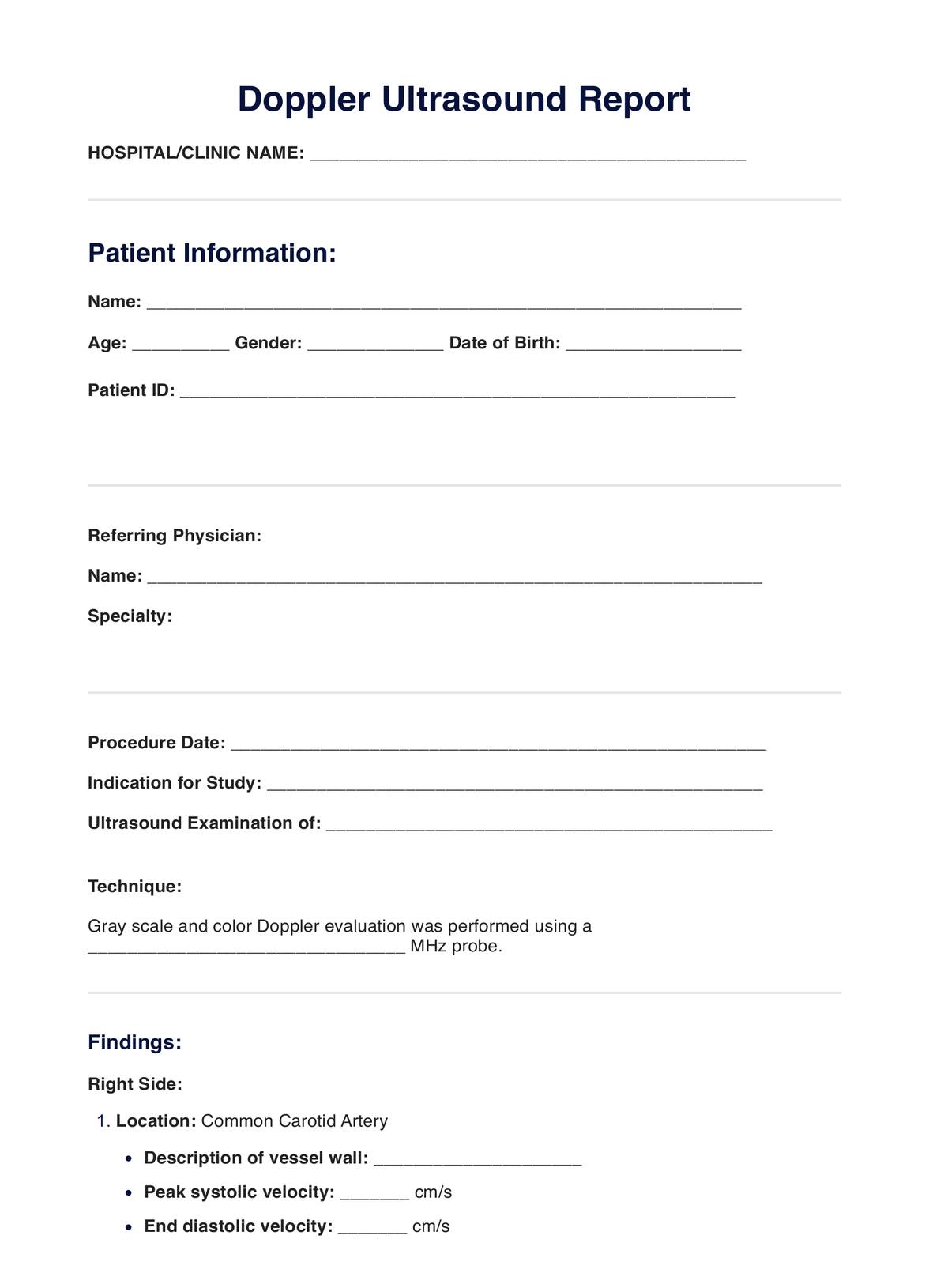Various healthcare professionals may request a Doppler ultrasound test, including cardiologists, vascular surgeons, obstetricians, and neurologists.

Doppler Ultrasound
Understand the Doppler Ultrasound Test, a non-invasive procedure that estimates blood flow through your vessels using high-frequency sound waves. Learn more today.
Doppler Ultrasound Template
Commonly asked questions
Doppler ultrasound tests are used when there is a need to assess the blood flow in the body's vessels. This may be for diagnosing conditions, monitoring treatment effectiveness, or evaluating fetal health during pregnancy.
Doppler ultrasound tests are used by applying a transducer to the skin over the area to be examined. The transducer emits and receives sound waves, which are processed into images and data about blood flow.
EHR and practice management software
Get started for free
*No credit card required
Free
$0/usd
Unlimited clients
Telehealth
1GB of storage
Client portal text
Automated billing and online payments











